Rock Solid Watercolor Essentials

How to Paint Rocks on Land and Sea
By Julie Gilbert Pollard
Value and shape are the two most important elements for minerals done right. Watercolor artist and instructor Julie Gilbert Pollard illustrates how to paint rocks successfully with these main factors. So you can confidently paint the various pebbles, rocks and boulders you might encounter on your landscape adventures.
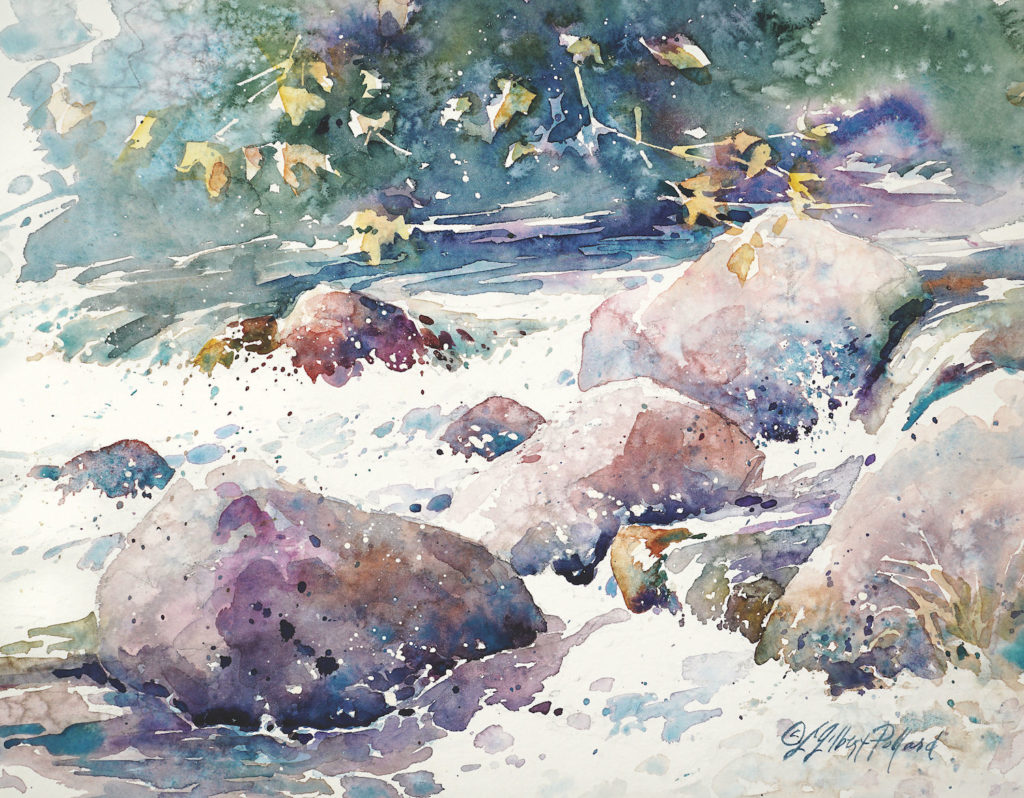
Julie always aims for a loose, painterly interpretation of a scene, as in Creek at Briar Patch (watercolor on paper, 11 x 14). This doesn’t mean being careless when making shapes; it means learning to capture the accuracy of the most important shapes.
The Keys to Realistic Rocks
Rocks are hard! Kidding aside, drawing and painting pebbles, rocks and boulders can be surprisingly difficult for — and extremely important to — the landscape painter. Rocks are challenging to depict realistically for several reasons, but primarily because we tend to assume it will be easy to just “toss” a few rocks into a landscape painting. Because of this, we don’t give them the attention they require, and they end up looking out of place.
Simple Shapes
Here’s the first key to painting rocks: Like every other subject we paint, they’re comprised of simple shapes. Handle them, hold them, and feel their weight, planes and unyielding surfaces to become more familiar with their properties.
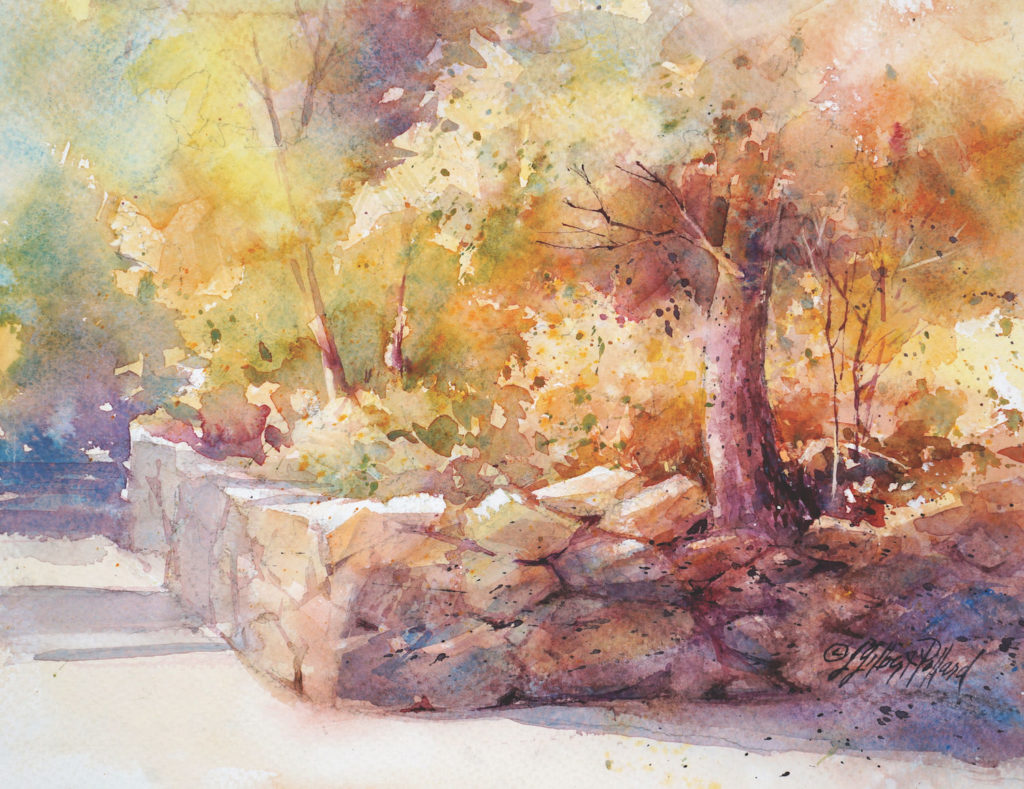
For Autumn Lane (watercolor on paper, 11×14), Julie chose to “lock in” some of the crevices between the rocks with diluted acrylic fluid. She used it like watercolor so that she wouldn’t lose her drawing when she laid in very wet washes of watercolor.
The second key? When we paint those shapes, our primary concern should be to render them using appropriate values. Shape and value are the two most important elements for realistic-looking rocks. Naturally, we’re going to add color, but color, while immensely important, is secondary to shape and value.
A Rocky Study
So, let’s look at shapes. First, gather some rocks to study.
Begin by Looking
Select a rock that has interesting shapes and planes. Place that rock in front of you, positioning it, if possible, so that you see a light-struck side, an out-of-light side and a cast shadow. Now examine it for the following features:
• outside contour shape
• inside planes
• light and shade, or value
• texture and cracks
Drawing
Draw the rock and its shadow.
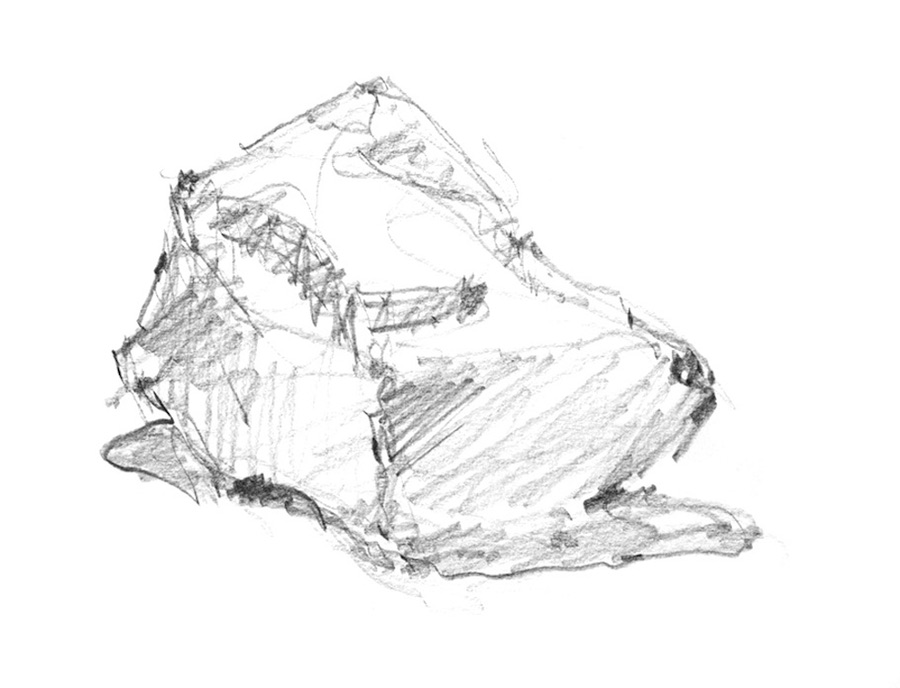
Work With Multiple Rocks
Assemble several rocks of different sizes and shapes into a still life. Make sure that, from your vantage point, there are overlapping rocks.
Refine Your Composition
Study the multiple rocks as you did the single rock.
Begin with a simple sketch and then proceed to a more careful rendition of the composition. It might be helpful to photograph your composition, print it, and then trace it so that you can see more easily where the shapes fall on the picture plane and where various shapes intersect one another. It’s often difficult to translate a three-dimensional subject into a flat two-dimensional format. A reference photo, followed by tracing, can be an effective learning tool.
Paint Over the Study
Paint over your pencil sketch or rock study.
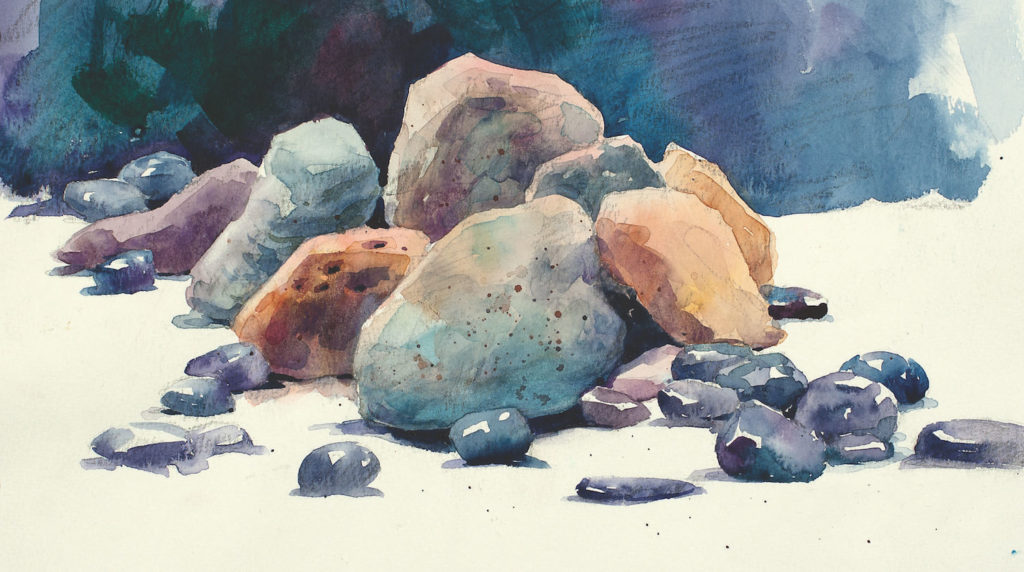
Rock study by Julie Gilbert Pollard, watercolor on paper
Take a Field Trip
Now for a field trip. If possible, find a rocky area out in nature, and apply what you’ve learned. If you paint from photos, you can also apply these lessons.
Focus on rocks and boulders surrounded by very little foliage or other distracting elements for a few paintings. Little by little, find a balance between drawing just enough to capture the character and personality of a rock, and putting in every little crack and detail.
Too stylized and non-individualized, and rocks begin to look like potatoes and popcorn. Too realistic, and you’ll lose the loose, painterly quality. Work to capture the shapes, angles, planes, textures, overlapping shapes, colors and cracks. Learn all you can about your subject.
Don’t Draw the Whole
Most people seem to have the need to draw the entire rock, as if they have X-ray vision and can see through the ground and other rocks. If it helps you to do that to learn, you can erase the unnecessary lines later to show just the part of the rock that’s above ground. The key is to do whatever you need to do to get the rocks drawn so that they overlap, partially buried in the soil.
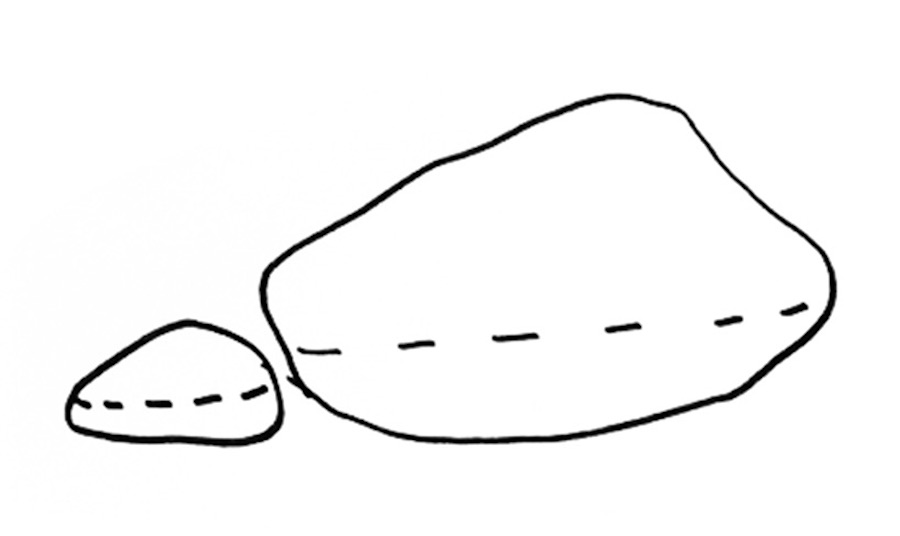
This illustration shows two complete rocks, not overlapped by each other, other rocks or soil. The broken line shows how far into the soil or sand they might be buried. That line could also be a water line.
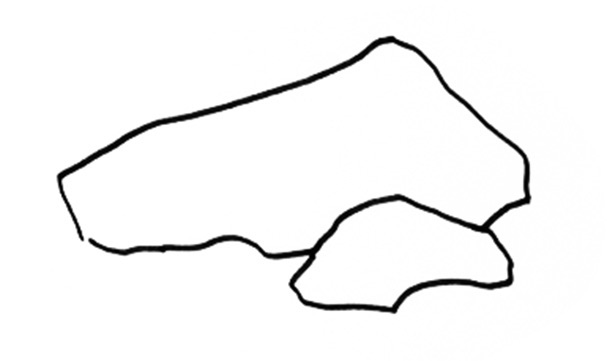
This illustration shows how much more realistic they look and how much depth is achieved when one rock is placed in front of the other. They’re partially submerged by sand, and the bottom edge is drawn so that it suggests other rocks might be in front.
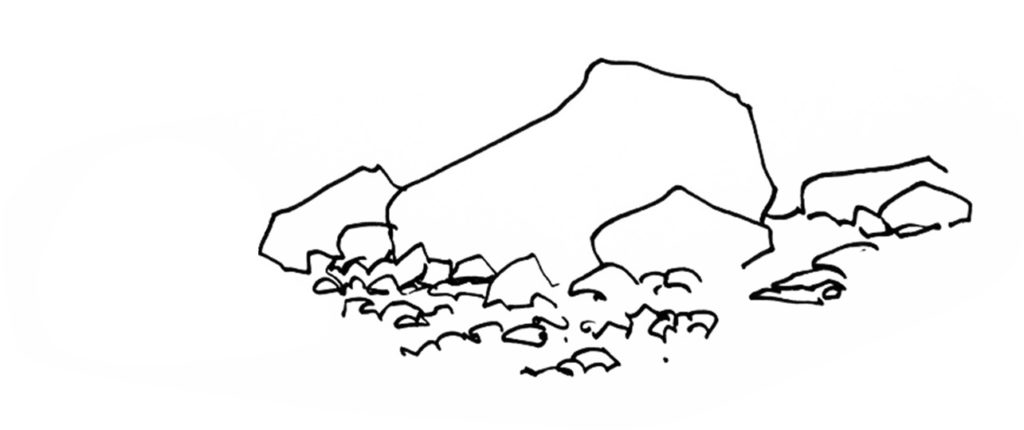
As you become more comfortable with the subject, you’ll learn how to imply rocky ground, transitioning from fully drawn rocks and boulders to a loose suggestion of “rocky-ness,” as shown here.
Learning how to paint rocks, you start to realize that while they may be quite rounded in nature, they may not look hard and “rocky” if we render them exactly as we see them. When you have a roundish rock in your reference, “shave off” some of the roundness to give that rock slightly more angularity.
This enables you to retain much of the character of the rock while giving it a “less-soft” appearance. Likewise, you often need to stylize or take a bit of artistic license when rocks are oddly shaped.
DEMO: How to Paint Rocks | Sedona Reds
Step 1
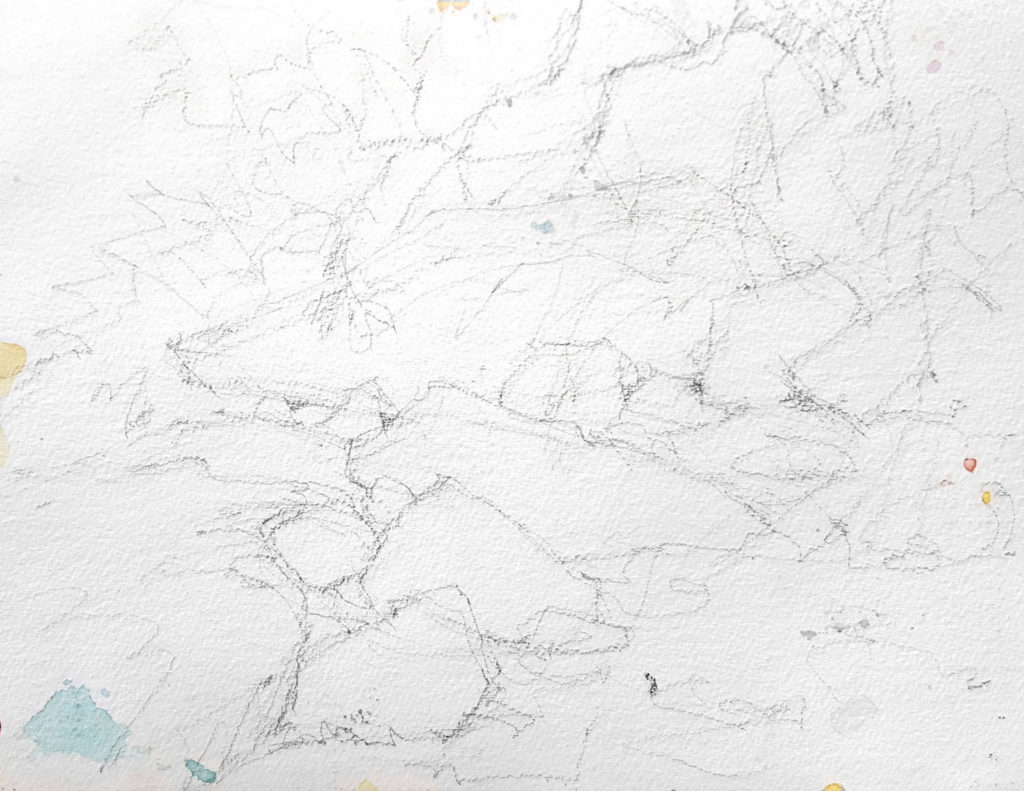
Step 1
In this drawing of a scene composed mostly of rocks and boulders, I gave a lot of attention to the contour shapes of each, making them asymmetrical even if they weren’t. This helps to create interesting rocks.
Additionally, you can see where the principle of “overlap” is used. When one shape overlaps another, depth is achieved — an important feature of rocks in the landscape. Without enough overlap, the rocks would resemble a wall more than a rock bed.
Step 2
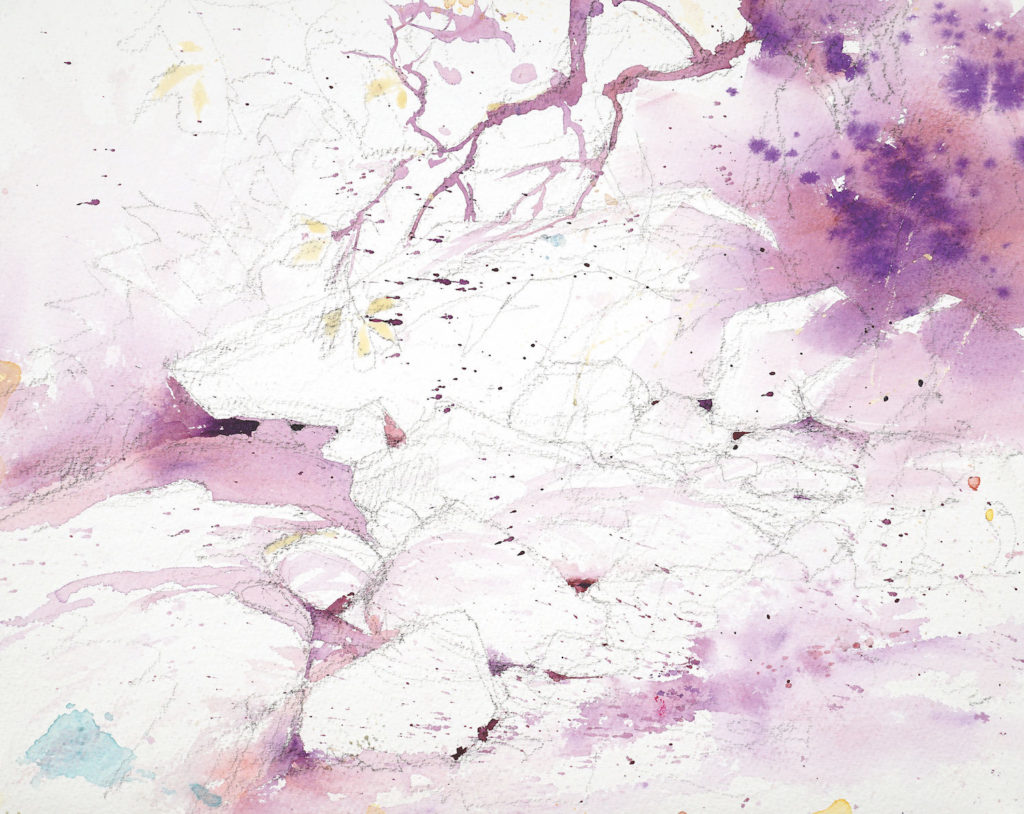
Step 2
To paint these rocks, I used a technique she calls “acrylic underpinnings.” She uses diluted acrylic fluid even further so that it looks like traditional watercolor.
Acrylic used transparently like watercolor won’t dissolve with subsequent washes. If she were to use traditional watercolor in dark values to begin the painting, she’d get muddy colors.
Step 3
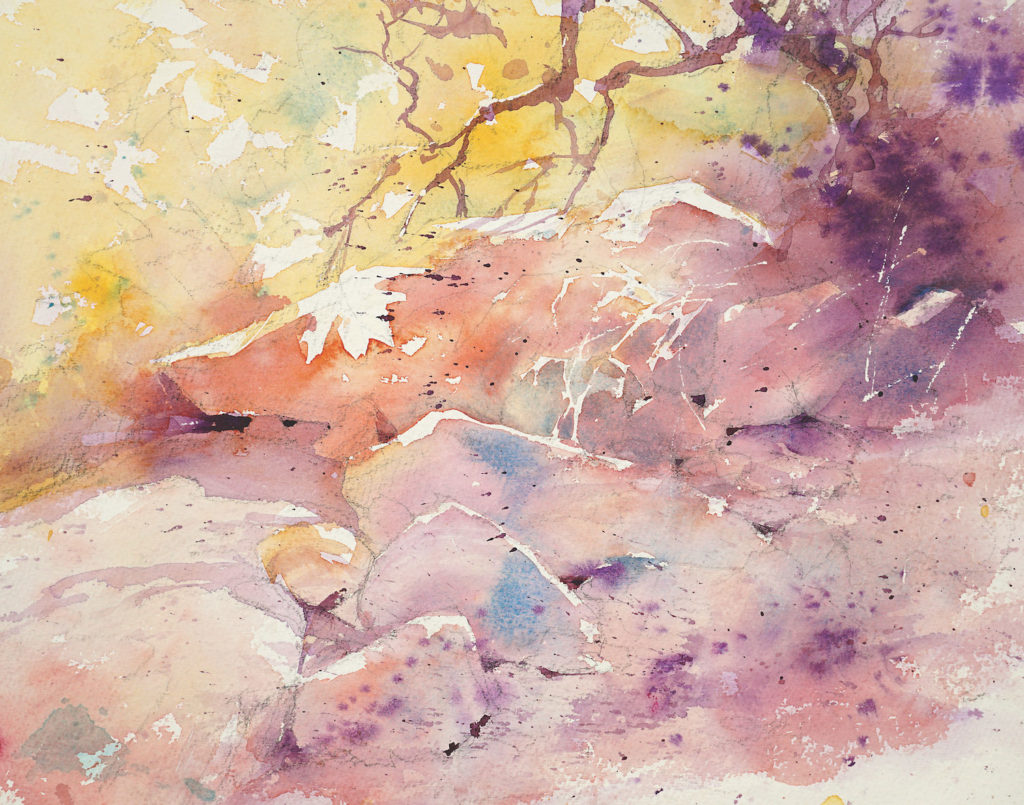
Step 3
Think of using acrylic underpinnings to lock in dark accents and the composition as we use liquid mask to lock in the whites. Once in place, these value underpinnings enabled you to paint freely and loosely, using wet washes that don’t have to “stay between the lines,” because the composition of lights and darks are “locked in.”
Step 4
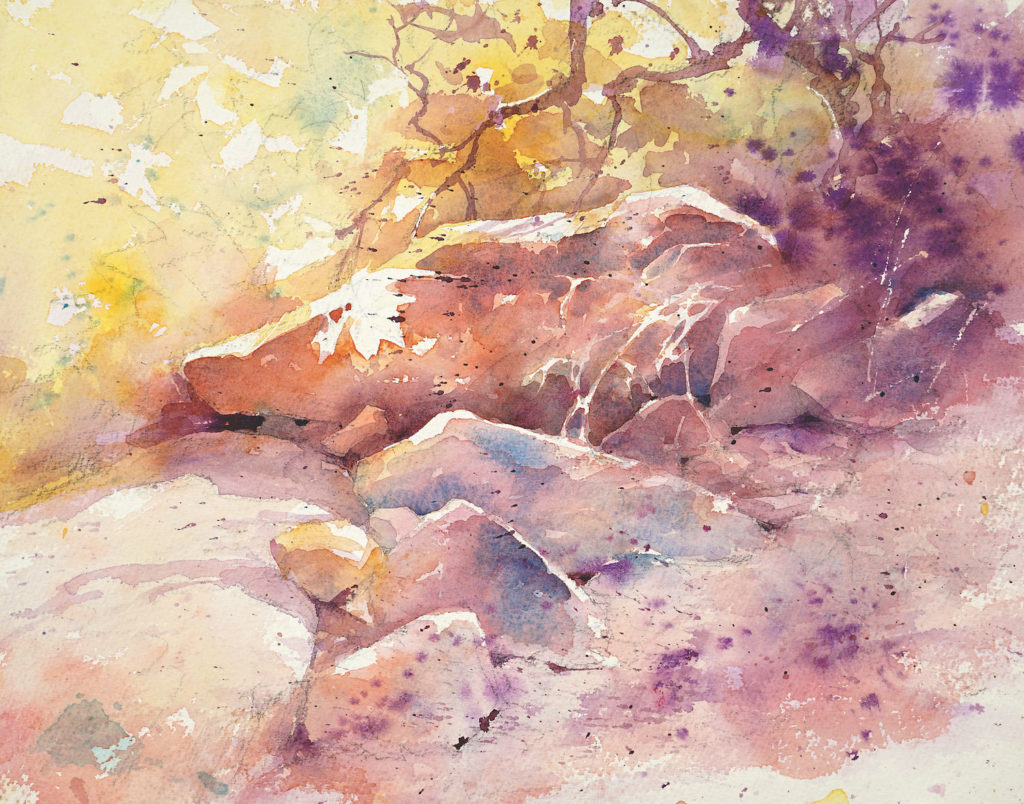
Step 4
At this point in the painting, I proceeded with traditional watercolor methods, exaggerating color, atmosphere and the sun hitting the tops of the rocks. She finds it effective to keep the tops of the rocks as mostly the white of the paper, breaking the edge here and there with light value color, medium tones for the bulk of the rocks and very dark crevices beneath and between them.
Step 5: Final Work
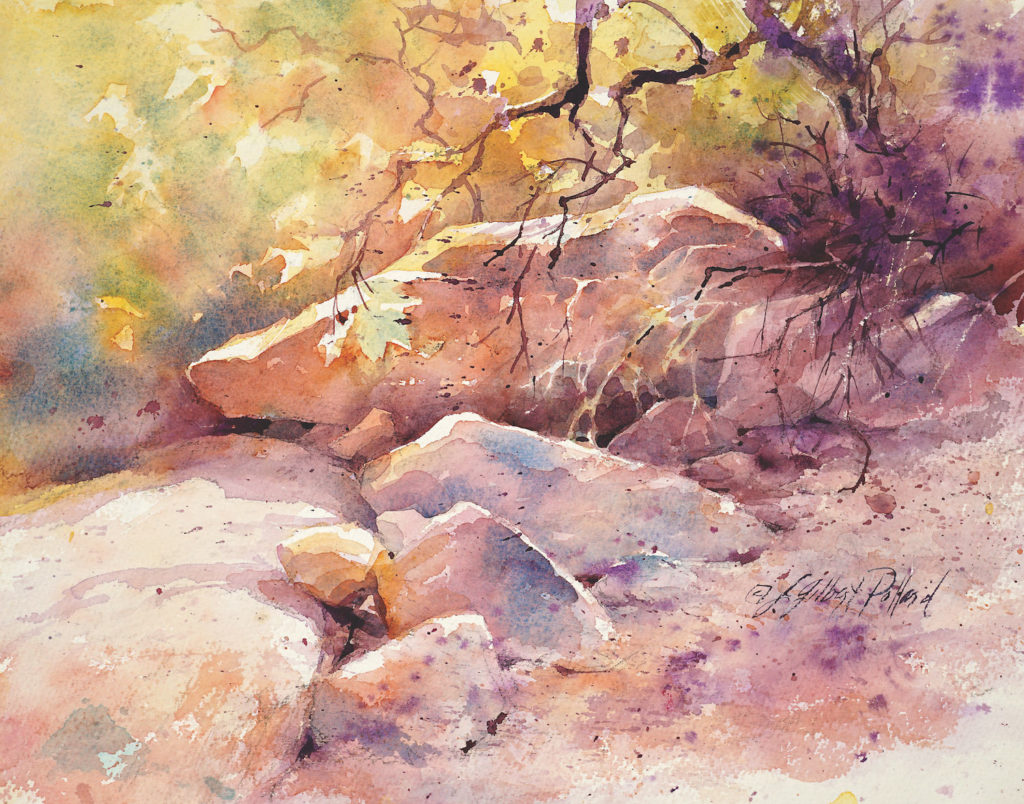
Sedona Reds by Julie Gilbert Pollard, watercolor on paper
In many cases, I find that it’s better to apply some artistic license to enhance the color of the rocks, as was the case in the red rocks in Sedona Reds (watercolor on paper, 11 x 14).
Rock On!
Now that you are equipped with all the know-how of how to paint rocks, you are ready to take on all the forms in the landscape.
Bonus!
Watch Julie Gilbert Pollard show you how to paint rocks amidst cascading waters below:
JULIE GILBERT POLLARD is the author of three books and the instructor of nine art videos. She’s a signature member of the San Diego Watercolor Society and Arizona Watercolor Association. Her award-winning work is in many private and corporate collections throughout the world. Learn more at juliegilbertpollard.com.


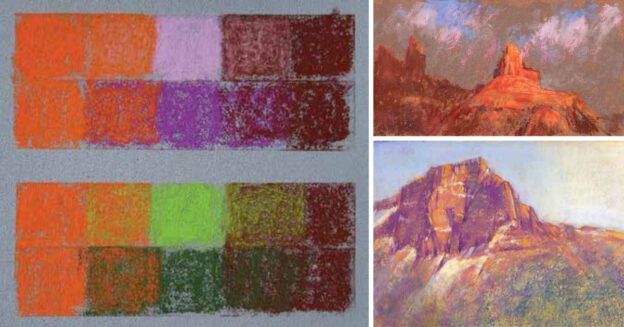
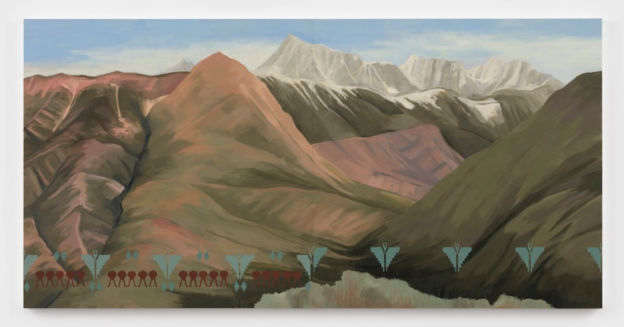

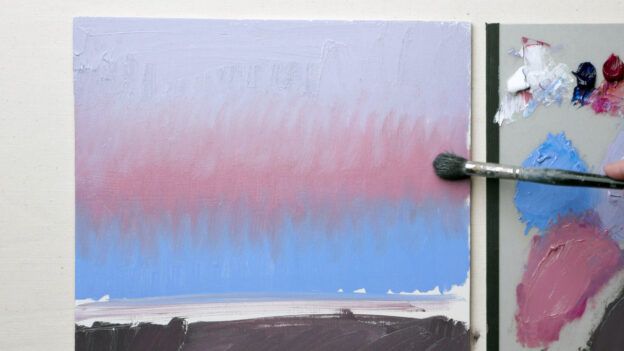




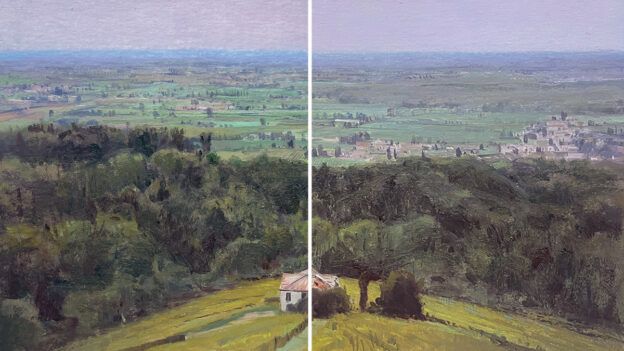





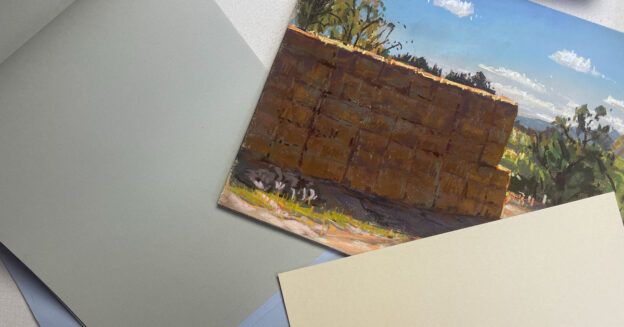
I love Julie’s work.